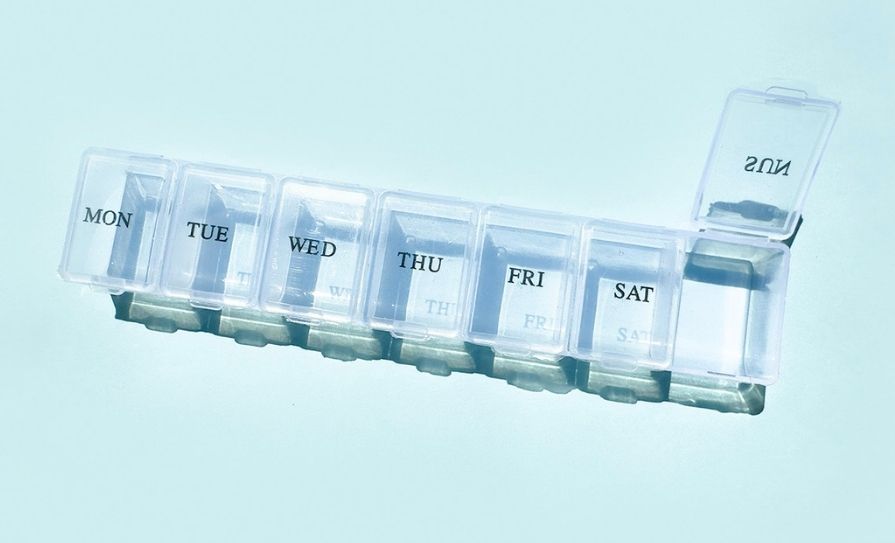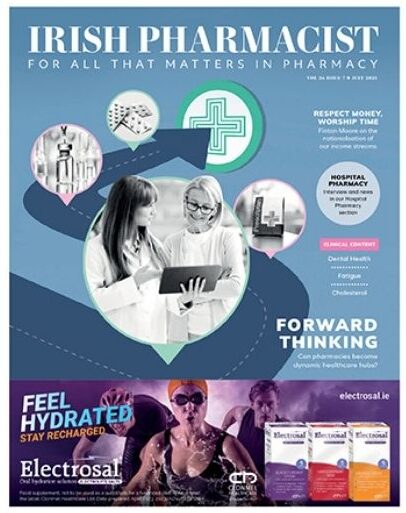Writing For Irish Pharmacist, Chartered Physiotherapist Sarah Hallahan Of Peak Physio Outlines The Use Of Heat Therapy For Muscular Conditions

Non-pharmacological therapies in the treatment of muscle tension, sprains and strains should ideally involve pain and swelling reduction, while promoting optimal tissue healing to facilitate a swift return to normal function. Thermotherapy is a useful adjunct in musculoskeletal injuries, having an effect on metabolism, blood flow, inflammation, oedema and connective tissue extensibility. The main aim of thermotherapy is to alter tissue temperature over a period of time to induce the desired physiological response, which will differ based on the pain or injury itself and the stage of healing.
Heat therapy is a widely used technique for muscle pain and is often considered due to its ease of application and costeffectiveness. Heat aims to raise the tissue temperature in order to improve circulation, increase metabolic rate and tissue extensibility. Heat therapy also enhances oxygen uptake to accelerate tissue healing. The mechanism of action of heat therapy is multi-faceted, as it can directly inhibit pain receptors in peripheral joints and muscles, while also working to relax muscle tissue through the secondary effects of vasodilation and reducing nerve sensitivity. Heat therapy is often most effective when used for a prolonged period. While minor aches and pains can be relieved with just 15-20 minutes of heat therapy, moderate-to-severe pain may require a longer duration, from 30 minutes to an hour.
HOT VS COLD
When considering thermotherapy for muscle pain or injury, there is often confusion between hot vs cold therapy and how or when to use each. While both therapies provide pain relief, their effects on muscle tissue differ. Cold therapy, or the use of ice on muscles, decreases local blood flow, therefore reducing inflammation and swelling. For this reason, ice is recommended in the early phases of pain or injury. From then on, heat can be used to improve muscle flexibility, accelerate tissue healing and reduce pain. For example, after an acute sprain, there will be bruising, swelling and redness in the area.
Cold therapy in the first 24 hours can help to reduce these symptoms and provide the optimal environment for healing. After 72 hours, the joint can become stiff, sore, and muscles will tighten-up, which is when heat will have the best effect. There has been some research done on the effects of thermotherapy on delayed-onset muscle soreness (DOMS) after exercise. Studies concluded that the application of heat within one hour following exercise provides effective pain relief for over 24 hours. In this case, the use of a heat pack provided the best results for muscle pain. Interestingly, this study showed that cold therapy for DOMS produced a similar outcome in terms of pain relief, however its effects did not last beyond 24 hours. Therefore, heat may be the preferred option in the treatment of post-exercise muscle pain.
LOWER-BACK PAIN
Heat therapy has also been reviewed in relation to non-specific lower-back pain, a common issue affecting approximately 85 per cent of people at some point in their lives. Research showed that continuous heat-wrap therapy is highly effective in those with acute or sub-acute lower back pain, reducing pain and disability for up to three months. It is important to note that this therapy was researched as an adjunct to an active rehabilitation plan which further reduces pain and improves function.
There are many types of heat therapy for muscle pain; the main differentiating factor being whether it is moist or dry heat. Examples of dry heat include heat pads or hot water bottles, whereas moist heat includes interventions such as hydrotherapy or steamed towel application. Exercising in warm water, ie, hydrotherapy, has been shown to attenuate muscle atrophy after injury and may block nociception, providing pain relief while also enhancing circulation and relaxing muscles.
Studies have also demonstrated that hot water immersion before exercise can be useful in limiting muscle pain afterwards and efficiently restoring muscle function. Research concludes that heat therapy is an effective adjunct in the treatment of muscle tension, strains or sprains, providing pain relief, muscle relaxation, enhancing tissue healing and improving muscle flexibility. While cold therapy is generally recommended in the early stages of an acute injury, heat is effective in the sub-acute phase beyond 72 hours in reducing pain and restoring muscle function. Post-exercise muscle pain can be limited with hot water immersion prior to exercising, while heat application within one hour afterwards can effectively relieve pain and accelerate recovery. It is important to note that when dealing with an injury, hot or cold therapy should always accompany an active rehabilitation programme to provide the best recovery.
Sarah is a Chartered Physiotherapist and qualified Pilates instructor at Peak Physio. She has a keen interest in musculoskeletal physiotherapy with experience in sport and exercise rehab, both in-clinic and through working with sports teams. As a physiotherapist, Sarah strives to use her professional knowledge in practice to promote health and wellbeing in all aspects of life.







